Module NBIoT
SKU:M028
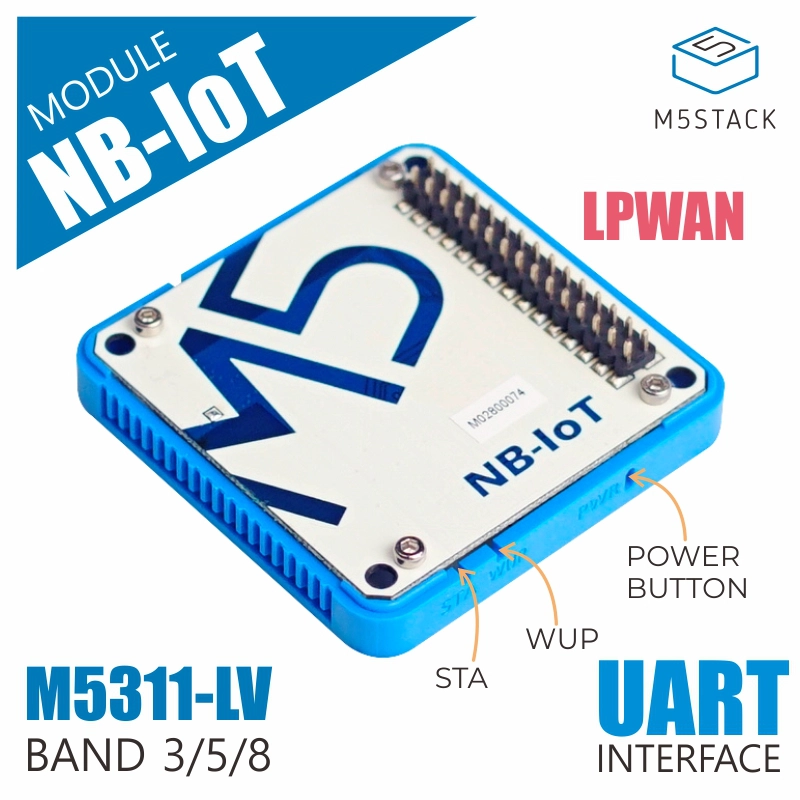
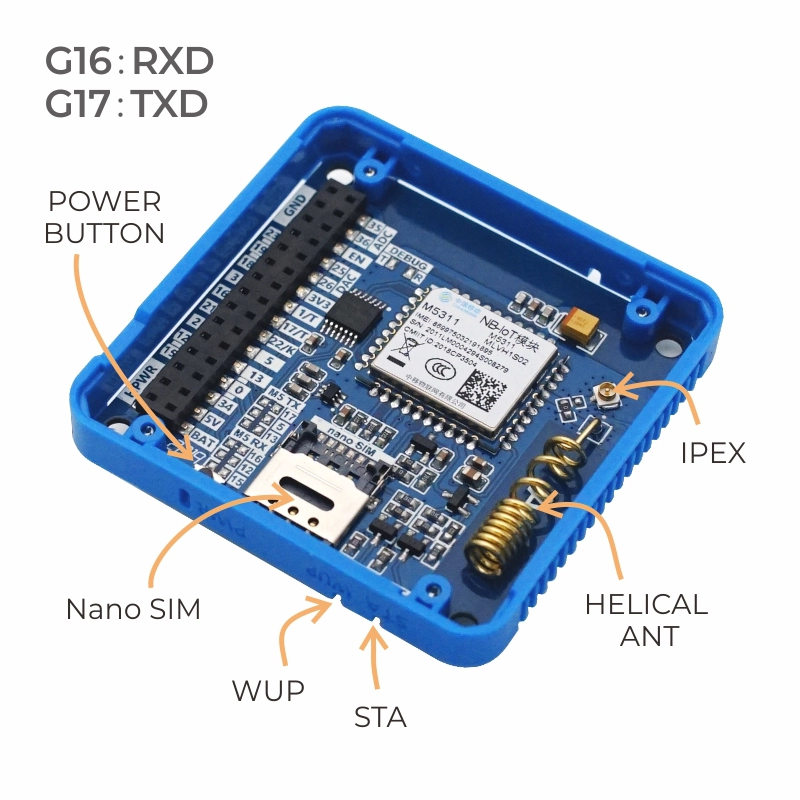
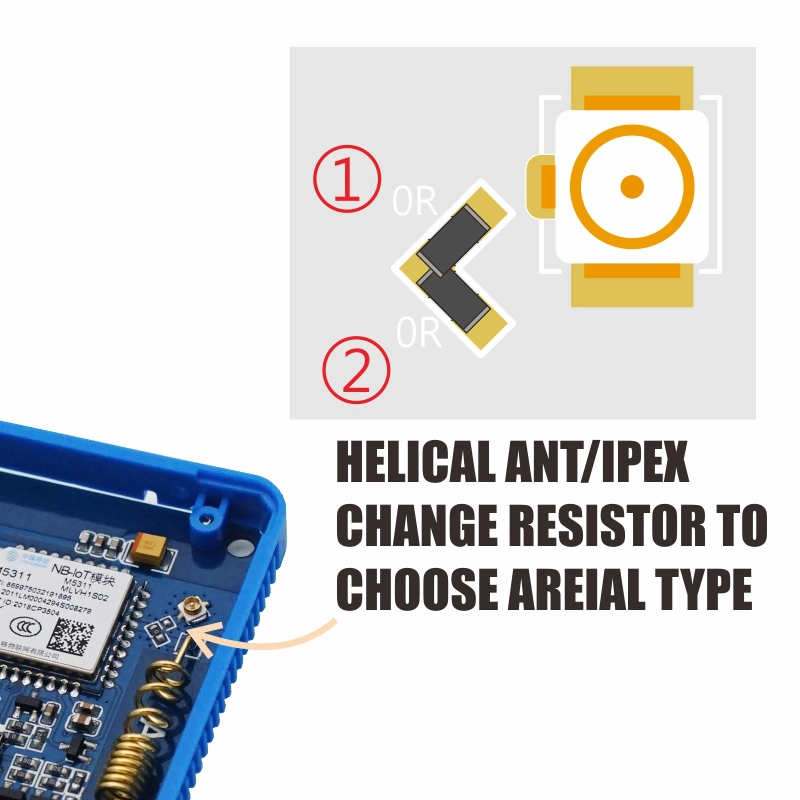
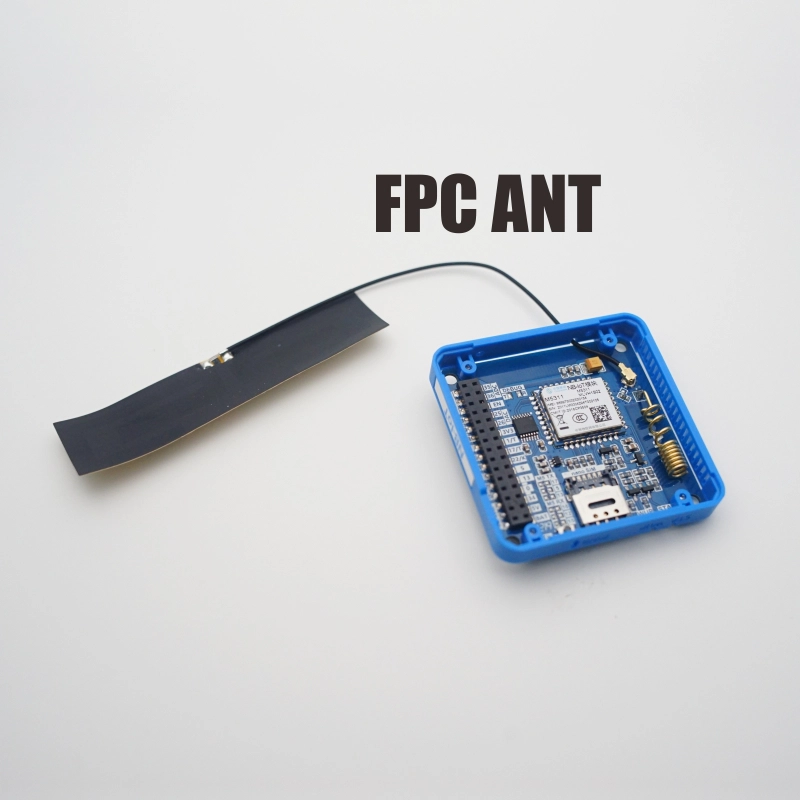
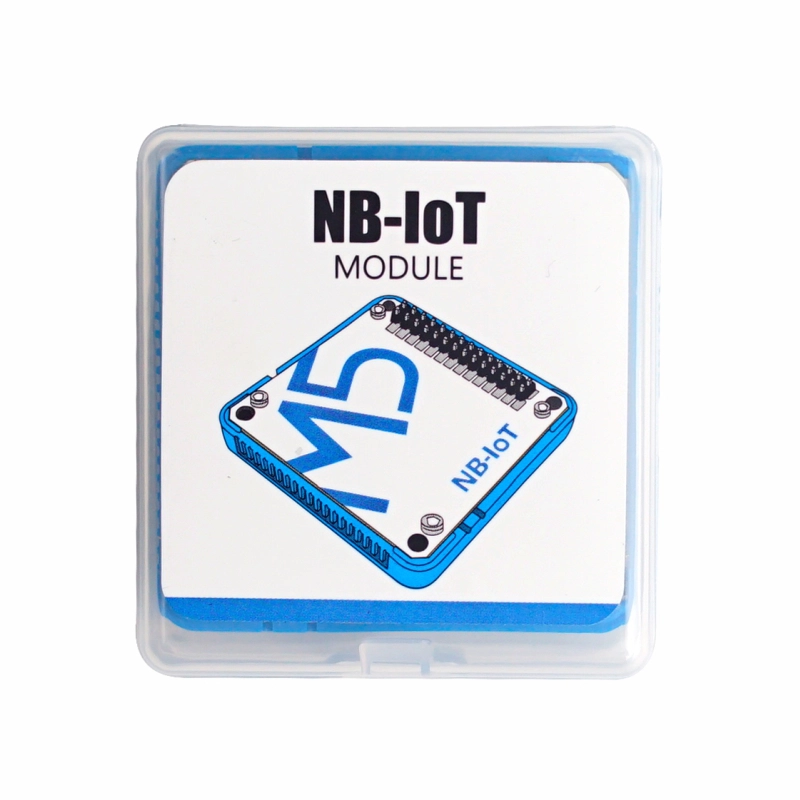
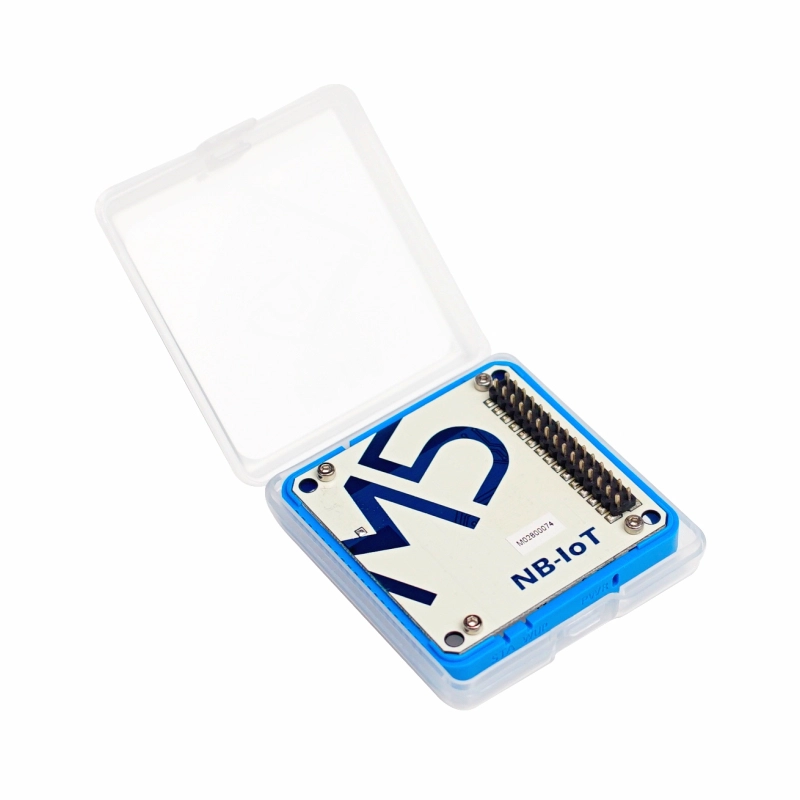
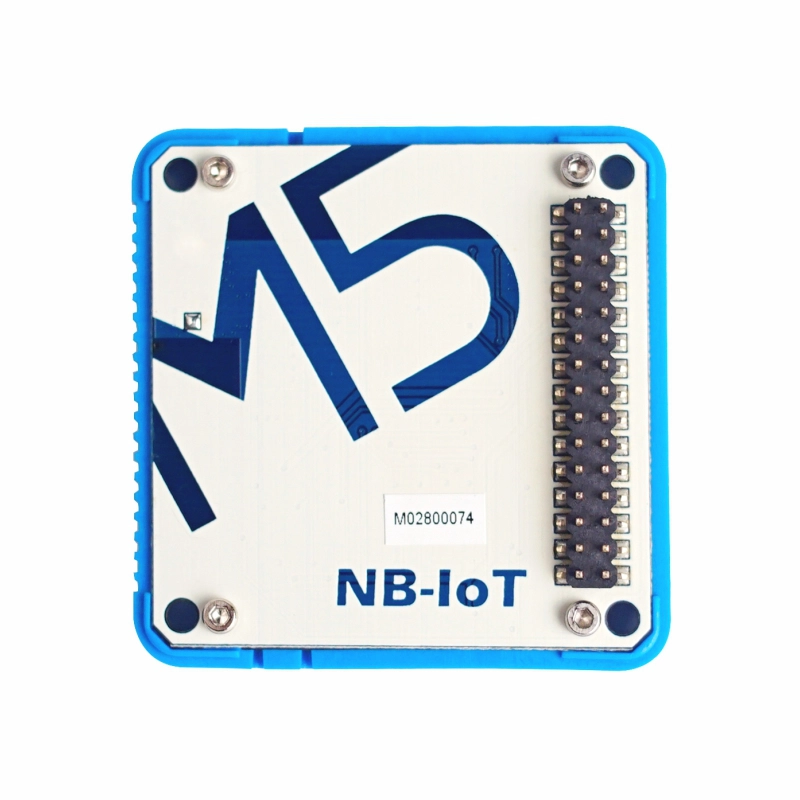
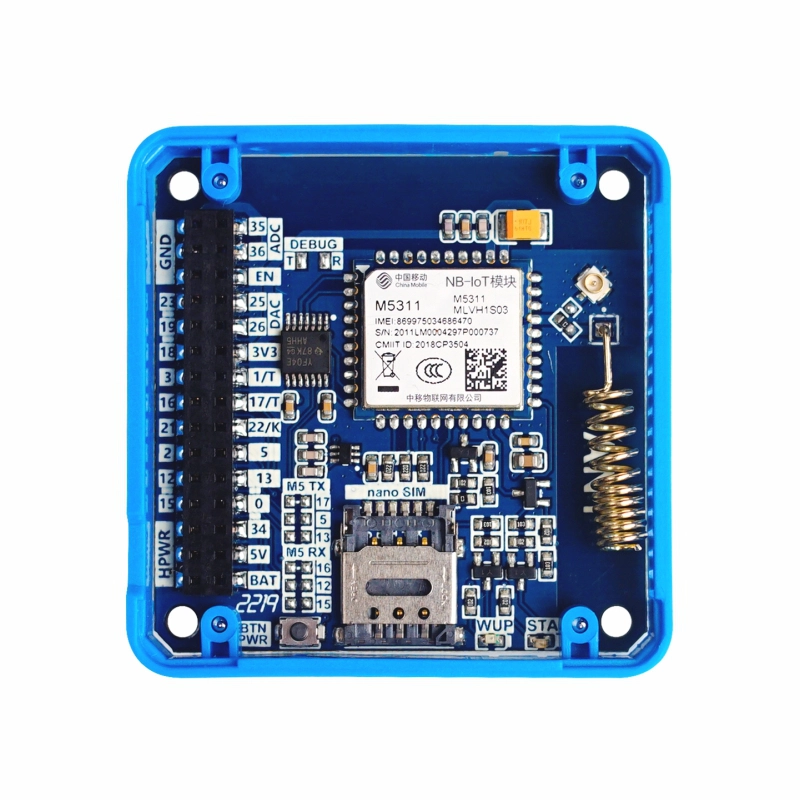








Description
Module NBIoT is an NB-IoT communication module in the M5Stack stackable module series. It integrates a high-performance NB-IoT full-network wireless communication module M5311. The low-power design helps customers achieve longer terminal life. The M5311 provides rich external interfaces and protocol stacks, supports external sensor devices, and offers great convenience for user product development. It also supports the OneNET cloud platform protocol, enabling seamless integration and rapid development. This module is particularly suitable for IoT industries such as smart metering, smart wearables, smart parking, and municipal management, where ultra-low power consumption and ultra-small size are core requirements.
Features
- SIM Card Type: Nano
- Status Signals: Two LED indicators
- Single Power Button
- Onboard Antenna Option: Default onboard spring antenna (or switch to IPEX connector via jumper)
- Serial Communication: Uart2 16/17
- Operating Temperature Range: -40°C to +85°C
- NB-IoT: Supports LTE Cat NB2*
- Frequency Bands:
- B3/B5/B8
- Data Transmission:
- LTE Cat NB1 Rate (kbps):
- Single Tone 15.625 (UL) / 21.25 (DL)
- Multi Tone 62.5 (UL) / 21.25 (DL)
- SMS: Supports PDU/TEXT mode
- Network Protocols: IPv4/IPv6/UDP/TCP/CoAP/LwM2M/HTTP/MQTT/TLS
- LTE Cat NB1 Rate (kbps):
- Electrical Characteristics:
- Current Consumption:
- 3uA @ PSM
- 0.4mA @ Idle mode (DRx=1.28S)
- 167mA @ Tx (23dBm/15kHzST)
- 54mA @ Rx
- Output Power: 23dBm ± 2dB
- Sensitivity:
- -114dBm (without retransmission)
- -130dBm (with retransmission)
- Current Consumption:
Includes
- 1 x Module NBIoT
Applications
- Smart Metering
- Smart Parking
- Municipal Management
Specifications
| Specification | Parameter |
|---|---|
| Net Weight | 13g |
| Gross Weight | 24g |
| Product Size | 54.2 x 54.2 x 2.8mm |
| Package Size | 60 x 57 x 17mm |
Learn
Frequency Bands for Some Country Operators
The following information is for reference only and may not be real-time.
| North America | B4 (1700), B12 (700), B66 (1700), B71 (600), B26 (850) |
|---|---|
| Asia Pacific | B1(2100), B3(1800), B5(850), B8(900), B18(850), B20(800), B26(850),B28(700) |
| Europe: | B3 (1800), B8 (900), B20 (800) |
| Latin America | B2(1900), B3(1800), B5(850), B28(700) |
| Commonwealth of Independent States | B3 (1800), B8 (900), B20 (800) |
| Sub-Saharan Africa | B3(1800), B8(900) |
| Middle East, North Africa | B8(900), B20(800) |
Additional Notes:
- GPIO2 held high for 2s to power on
- GPIO2 held high for 8s to power off
- Power button held for 2s to power on
- Power button held for 8s to power off
- GPIO26 high to reset the module
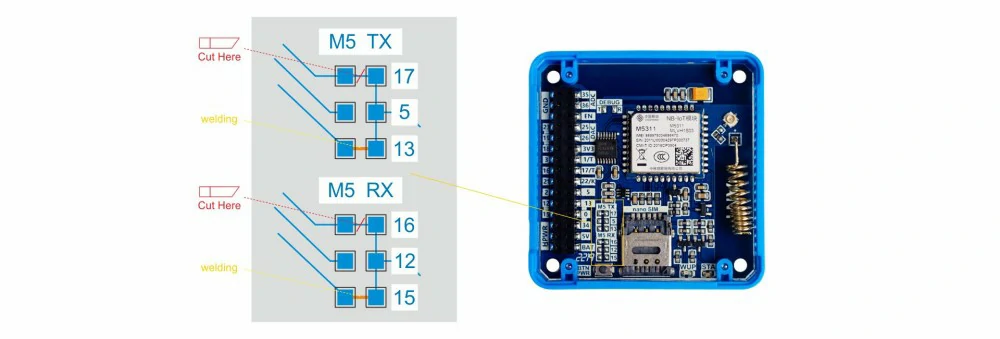
Schematics

PinMap
M5-Bus
FW on the M5-Bus below can be switched via fly wires to adapt to different main control devices.| PIN | LEFT | RIGHT | PIN |
|---|---|---|---|
| GND | 1 | 2 | |
| GND | 3 | 4 | |
| GND | 5 | 6 | |
| 7 | 8 | ||
| 9 | 10 | RST | |
| 11 | 12 | 3V3 | |
| 13 | 14 | ||
| TXD (FW) | 15 | 16 | RXD (FW) |
| 17 | 18 | ||
| PWR | 19 | 20 | RXD (FW) |
| TXD (FW) | 21 | 22 | RXD (FW) |
| TXD (FW) | 23 | 24 | |
| 25 | 26 | ||
| 27 | 28 | ||
| 29 | 30 |
Datasheets
Softwares
Arduino
Protocol
Easyloader
| Easyloader | Download Link | Notes |
|---|---|---|
| Module NBIoT Example Easyloader with M5Core | download | / |